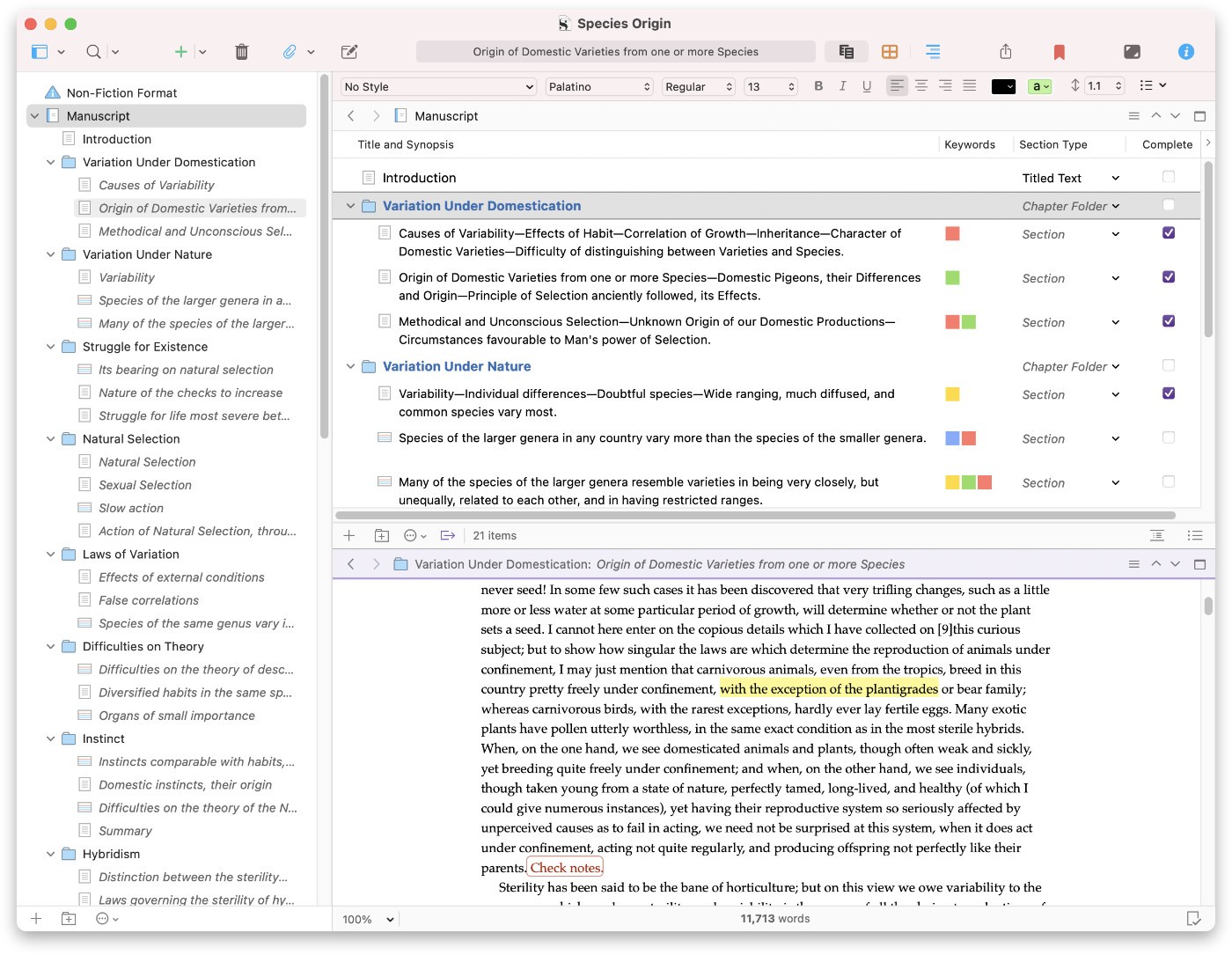


I have used it for years, but it took a while before I was aware of all its features.
Literature and Latte, the company “founded by writers for writers,” has produced a robust software.
#Scrivener 3 index Pc
In their review of Scrivener 3, PC Magazine writes (rightly, in my opinion), “Scrivener is the best writing app for long-form writers because they built it with their needs in mind.” I’d suggest a friendly amendment: “It’s for writing. Literature and Latte, the architects of Scrivener 3, claim “It’s for writing.
#Scrivener 3 index software
Scrivener is a writing software that helps writers organize research, notes, and drafts, or, as Scrivener puts it, “See the forest or the trees.” It can even help with storyboarding. In my 2019 post: Review: Using Scrivener for Family History and Memoir Writing, I introduced Scrivener and described its version 1 thusly:
#Scrivener 3 index mac
The ScrivenerVirgin blog is a journey of discovery:Ī step-by-step exploration of how Scrivener can change how a writer writes.As a beta user of Scrivener 3 by Literature and Latte for the last two years, I was excited to see Literature and Latte announce its release.īefore we go into the improvements Scrivener 3 brings to Windows users (the Mac version has been out for a while), let’s step back. To help me to prepare, you could also complete this short questionnaire.
#Scrivener 3 index how to
To watch me demonstrating how to control auto numbering of chapters in Scrivener, or to ask any questions, book a Simply Scrivener Special. Questions? Need a helping hand? Want a demo? These tags are put within the text of your manuscript, and they are replaced with actual numbers during the Compile process. You can even dream up your own name and create a ‘named auto numbering stream’. It’s not only chapters that Scrivener can number for you. Scrivener provides options so you can count using Arabic numbers (1, 2, 3, …) or Roman: If you tick the Title column AND set up the Title Prefix, you’ll get both: your title and Scrivener’s automatically generated one!ĭecide which you want and change the settings accordingly. If you’d rather number your chapters yourself, or not number them at all – just have the titles you’ve used for the titles of your chapters – that’s simply achieved, by ticking the correct box in the Section Layouts pane. What if you don’t wan’t Scrivener to automatically number your chapters? This can be combined with the ‘:chapter’ in the Title prefix pane – or used for many other auto numbering options. This extract from the complete list of placeholders (available via the Help menu) explains all.Īnd there’s always the simply numbering activate by the ‘n’ tag. There are alternative options for the worded version of a chapter title number: w and W. It results in the words ‘One, ‘Two’, ‘Three’ etc being used to number your chapters. To activate the auto numbering of chapters, you need to put a tag as a title prefix in the Title Options pane (part of the Compile process). You have the option to let Scrivener number your chapters for you using numbers (1, 2, 3, …) or words (one, two, three, …). A complete list is available via the Help Menu. These are essentially ‘tags’ which are replaced during the Compile process for actual data. There are a host of numbering options, and they are activated using ‘placeholders’. So, today, I’m explaining all – and much else about Scrivener’s auto-numbering feature. For many, this proves to be a stumbling block. One of the most-asked questions when compiling is about chapter numbering.


 0 kommentar(er)
0 kommentar(er)
